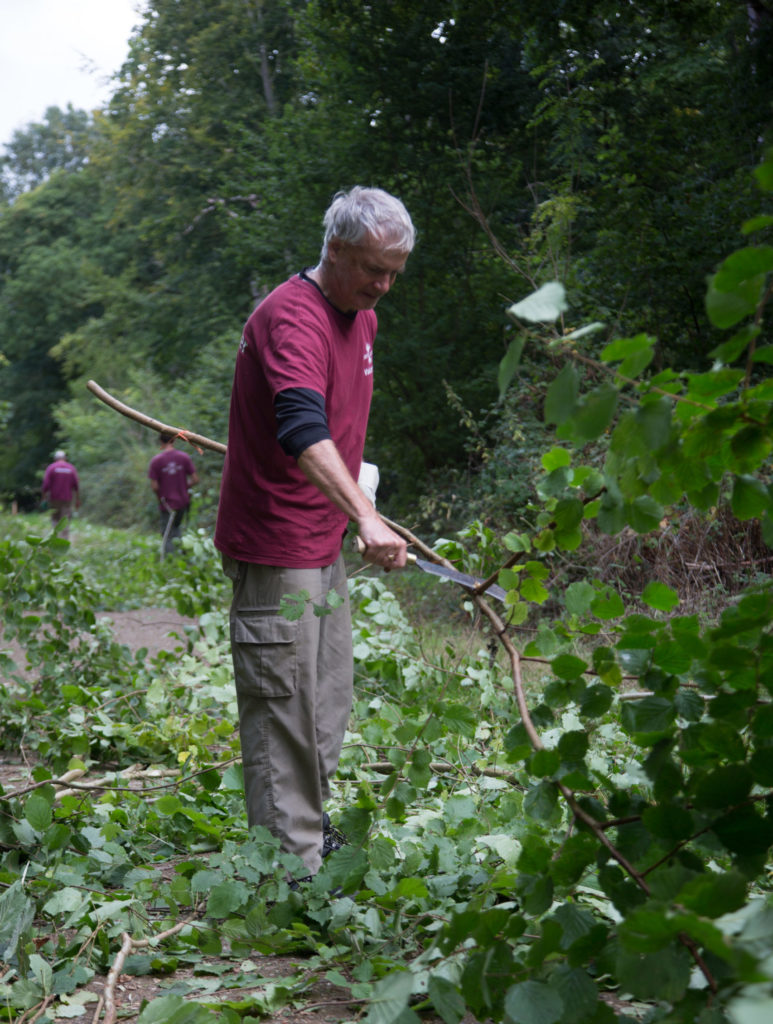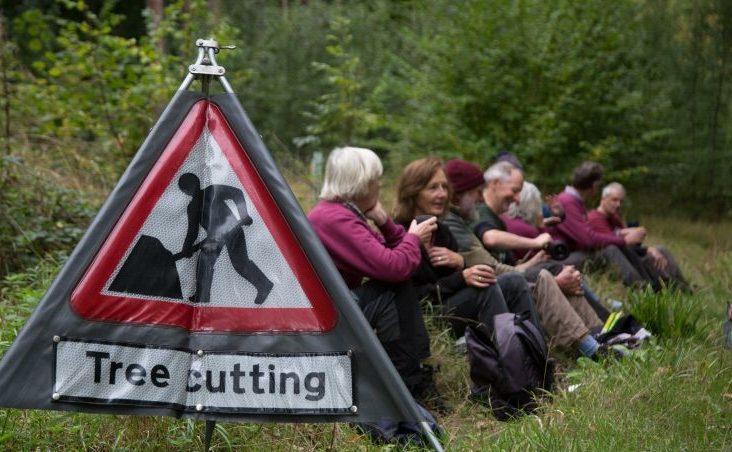Volunteers keeping our woodlands wonderful
Dating back to the Stone Age, coppicing is a woodland management practice of cutting trees and shrubs down to ground level to promote vigorous re-growth of many smaller shoots. By renewing constant fresh growth and the removal of old wood, it can help to prevent the manifestation of dead or diseased wood in the tree, allowing the tree to live for a lot longer, and also provides a sustainable supply of timber for future generations.
A useful cycle
At Earth Trust, with the help of our Land Management volunteers, we coppice our woodland on rotation to create areas of different vegetation height and different successional stages. We create scallops, which provide a soft edge habitat between the footpath and mature woodland. This increases woodland biodiversity, as greater amounts of light can reach the ground, allowing other species to grow there. Many of these species are food sources for butterflies and other insects, which in turn provide food for birds, bats and other mammals.
When we cut a tree, we leave a ‘coppice stool’ which is left to re-grow for 5-10 years, and then we return to coppice again.
We use what we remove:
- Coppicing produces stakes (6ft tall) which we use for hedge laying, and binders (thinner and taller) which we use to bind the tops of the stakes in the hedge together
- Larger timber is set aside for use in the Earth Trust boiler to heat our buildings
- Smaller, unsuitable timber and bramble is used to form a boundary “dead hedge” – this forms a great wildlife habitat and eventually decays down, back into the earth

Meet the woodcutters…
Colin Johnstone is one member of the Friday Group – our Land Management volunteer team who take on regular and varied tasks to nurture our wild green spaces.
“As well as supporting wildlife, coppicing is also lots of fun! In equal measure it’s destructive and productive, and you can work in a solo space “for safety” or as a team “for safety”, Colin tells us.
“At the end of a day you can see definite progress and have, depending on the area tackled, a large number of stakes and binders ready for hedge laying. The days work then gives back again as the cleared area gets more sunlight, hence more wildflowers and you start seeing improved tree regrowth, with better quality stakes and binders for the future. Happy days!”

Colin’s volunteering story
Colin shares his story with us about how he came to join the Earth Trust community:
“I first became aware of Earth Trust when I attended a couple of tree planting days at Neptune Wood in the late 90s, but it was when I attended the Plant Health Conference in Oct 2018, that I signed up for the weekly volunteer newsletter to find out more.
“I was in full-time work and couldn’t really get involved, but the newsletter in early May 2019, immediately after my wife passed away, advertised for a Community Warden at Mowbray Fields which was an ideal activity for me at that time (got me out the house, gave me some fresh air, purpose, time, space etc). Over the next few months of my return to work programme, I took a couple of Fridays off to volunteer. Despite absolutely loving my job (Environmental Advisor/Auditor for the RAF) I never really got back into it and resigned/retired in November 2019. As I then had the time, I started regular volunteering on Fridays.
“Volunteering at Earth Trust has given me space (if I want a more solo task, I can usually find one), companionship (the Friday Workgroup chat is as diverse and comical as anyone could handle), exercise (sometimes you can really feel the effort on a Saturday morning), fulfilling productivity. Months, and now years, after clearing areas or working on hedges I can return and see the regrowth (it’s surprising how I worked on all the best looking bits!).
“Over the last couple of years, while I’ve been regularly volunteering, I have; removed and built fences, helped with some hedge laying, carried out lots of coppicing, scrub clearance, log splitting and stacking as well as the dreaded thistle and ragwort pulling. A lot of new skills practiced in there (though certainly not mastered!).
“To anyone thinking about volunteering for Earth Trust I would say, stop thinking about it, and give it a go. It won’t suit everyone, but I don’t think there’s much to dislike in being outdoors (OK, in all weather conditions), getting some physical activity (within your own set limits) along with like-minded characters with a common goal – nature conservation.”
Land Management is just one area of our volunteer programme. We offer a range of opportunities to suit all types of different interests and expertise – from helping out at events to species monitoring. Take a look at our volunteering pages if you’d like to find out more.